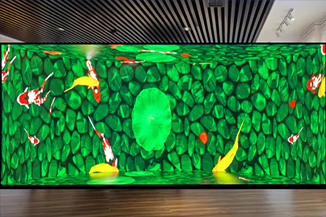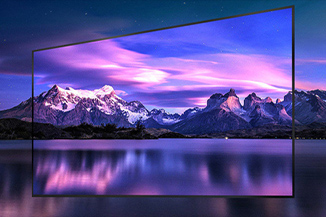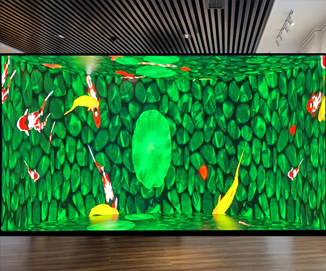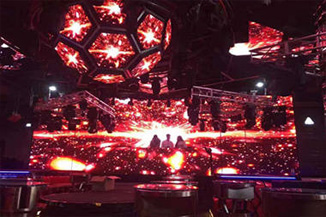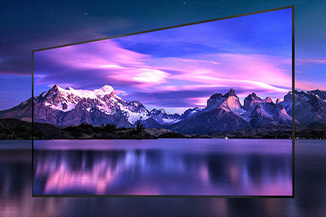Publisher: Supplier of LED Display Time: 2022-02-28 16:59 Views: 2014
At present, the luminous decay of white LEDs on the market may be one of the primary problems in entering civilian lighting. There are two main factors for the light decay of LED:
1. Quality problems of LED products themselves:
1. The LED chip used is not in good condition, and the brightness decays quickly. 2. There is a defect in the production process, and the heat dissipation of the LED chip cannot be exported from the PIN pin well, resulting in the high temperature of the LED chip and aggravated chip attenuation.
Second, the use of conditions:
1. The LED is driven by constant current, and some LEDs are driven by voltage to make the LED attenuate. 2. The driving current is greater than the rated driving conditions. In fact, there are many reasons for the light decay of LED products. The most important one is the heat problem. Although many manufacturers do not pay special attention to the problem of heat dissipation in secondary products, the degree of light decay of these secondary LED products will be higher than that if they focus on heat dissipation for a long time. LED products are higher. The thermal resistance of the LED chip itself, the influence of silver glue, the heat dissipation effect of the substrate, and the colloid and gold wires are also related to light decay.
Three factors that affect the quality and light decay of LED lamps
The data detected by a single LED white light on the burn-in board must be somewhat different from the data detected when the LED white light is assembled into a lamp for aging. The size of this difference depends on the electrical parameters of the LED when it works, the design of the luminaire, and the environment in which the luminaire is used. First of all, what kind of LED white light to choose.
This is very important, the quality of LED white light can be said to be a very important factor. For example, the same LED white light, which is represented by the 14mil white light segment chip of Epistar, is encapsulated with ordinary epoxy resin primer, white light glue and packaging glue. After 1,000 hours, the attenuation data is 70% light decay; if it is packaged with Class D low-fat glue, under the same aging environment, the light decay per 1,000 hours is 45%; if it is packaged with Class C low-fat glue, under the same aging environment , 1000-hour light decay is 12%; if the B-type low-fat glue is encapsulated, in the same aging environment, the 1000-hour light decay is -3%; if the A-class low-fat glue, in the same aging environment, 1,000 hours light The decline is -6%.
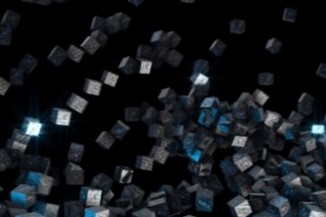
Why do different packaging processes lead to such big differences?
One of the main reasons is that LED chips are afraid of heat. Occasionally being heated more than 100 degrees in a short period of time, it does not matter, I am afraid that it will be a great damage to the LED chip if it is exposed to high temperature for a long time. Generally speaking, the thermal conductivity of ordinary epoxy resin is very small. Therefore, when the LED chip is lit and working, the LED chip will emit heat, and the thermal conductivity of ordinary epoxy resin is limited. When the temperature of the LED bracket is measured externally to be 45 degrees, the core temperature of the chip in the LED white light may exceed 80 degrees. The temperature node of the LED is actually 80 degrees, so when the LED chip works at the temperature of the junction temperature, it is very tormented, which accelerates the aging of the LED white light.
When the LED chip is working, the central temperature produces a high temperature of 100 degrees, and it can immediately dissipate 98% of the heat through the bracket pins, thereby reducing heat damage to it. Therefore, when the temperature of the LED white light bracket is 60 degrees, the core temperature of its chip may only be 61 degrees. It can be seen from the above data that the choice of LED white light packaging process directly determines the light decay of LED lamps. Secondly, the working environment temperature of LED lamp beads. According to the aging data of a single LED white light, if only one LED white light works and the ambient temperature is 30 degrees, then the bracket temperature of the single LED white light will not work. over 45 degrees. At this time, the life of this LED will be ideal.
If there are 100 LED white lights working at the same time, and the interval between them is only 11.4mm, then the bracket temperature of the LED white lights around the stack may not exceed 45 degrees, but the temperature of the LED white lights in the middle of the stack may not exceed 45 degrees. Those LED white lights have the potential to reach high temperatures of 65 degrees. At this time, the LED lamp bead is a test. Then, those LED white lights gathered in the middle will theoretically have a faster light decay, while the LED white lights around the lamp stack will have a slower light decay.
However, if the LED lamp beads are separated by more than 25mm, the heat they radiate from each other will not accumulate so much. At this time, the temperature of each LED white lamp bracket should be less than 50 degrees, which is more conducive to the normal operation of the LED. If the LED working environment is in a relatively cold place, the average temperature throughout the year may be only about 15 degrees, or less, then the life of the LED will be longer. Or, when the LED is working, there is a small fan blowing next to it to help it dissipate the heat, which is also very helpful for the life of the LED. Anyway, everyone should know that LEDs are afraid of heat. The higher the temperature, the shorter the LED lifespan, and the lower the temperature, the longer the LED lifespan. The ideal operating temperature of LEDs is of course between minus 5 and zero degrees. But this is basically impossible.
Therefore, after we understand the ideal working parameters of LED lamp beads, we should try our best to strengthen the functions of heat conduction and heat dissipation when designing lamps and lanterns. Anyway, the lower the temperature, the longer the LED life. Again, the working electrical parameters of the LED lamp bead are designed. According to the experimental results, the lower the driving current of the LED white light, the smaller the heat emitted, of course, the smaller the brightness. According to the survey, in the design of LED solar lighting circuit, the driving current of LED is generally only 5-10mA; for products with a large number of lamp beads, such as more than 500 or more, the driving current is generally only 10-15mA , And the driving current of the general popular LED lighting is only 15-18mA, and few people design the current to more than 20mA.
The experimental results also show that under the driving current of 14mA, and the cover is not ventilated, and the air temperature inside reaches 71 degrees, the low-fat product has zero light decay for 1,000 hours and 3% for 2,000 hours. , which means that this low-decay LED white light has reached its maximum limit in such an environment, and no matter how large it is, it is a kind of damage to it.
Because the aging board used for aging has no heat dissipation function, the heat generated when the LED works basically cannot be conducted to the outside. This is proved experimentally. The air temperature inside the aging board has reached a high temperature of 101 degrees, and the surface temperature of the cover on the aging board is only 53 degrees, a difference of dozens of degrees. This shows that the designed plastic cover basically does not have the function of heat conduction and heat dissipation. However, in the design of general lamps and lanterns, the function of heat conduction and heat dissipation is considered. Therefore, to sum up, the design of the working electrical parameters of the LED lamp bead should be based on the actual situation. If the heat conduction and heat dissipation function of the lamp is good, it does not matter if the driving current of the LED white lamp is increased a little, because the LED lamp bead works. The heat can be exported to the outside in an instant, and there is no damage to the LED, which is the best care for the LED. On the contrary, if the heat conduction and heat dissipation function of the lamp is so-so, it is better to design the circuit to be smaller so that it puts out less heat.
As mentioned above, researchers believe that because the Auger effect is an internal formation mechanism, LED light decay cannot be eliminated, but it can be minimized. Since it can be minimized, where should we start? I believe this is also a concern of many netizens. Let's analyze the relationship between white LED light decay and materials such as wafers, die-bonding primers, and phosphors.
The relationship between light decay of white LED and materials
With the advent of blue LEDs, white LEDs can be easily obtained by using the combination of phosphors and blue LEDs, which is the most mature white light packaging method in the industry. With the advent of blue LEDs, white LEDs can be easily obtained by using the combination of phosphors and blue LEDs, which is the most mature white light packaging method in the industry. At present, white LED has become a lighting source, and general household lighting has become a reality. However, in the process of use, many white light products have large attenuation and are not suitable for the lighting market. Taiwan Hongcai Optoelectronics has increased the research and development of white light to meet the needs of the high-end lighting market. The LED lighting industry does its best. The following are the five points of experience that our company has summarized in the packaging process, and we will communicate with you in the industry, in order to contribute to the improvement of white LED packaging technology.
1. The influence of the chip on the light decay of white LED
From the results of the current experiments, the influence of the wafer on the light decay can be divided into two categories: the first is that the material of the wafer is different, resulting in different attenuation. Currently, the commonly used blue wafer substrate materials are silicon carbide and sapphire. It is a single electrode, and its thermal conductivity is relatively good. Sapphire is generally designed as a double electrode, which is difficult to conduct heat and has a poor thermal conductivity. The second is the size of the wafer. When the wafer material is the same, the attenuation gap is different for different sizes.
2. The effect of solid crystal primer on the light decay of white LED
The die-bonding adhesives commonly used in the white light LED packaging industry include epoxy resin insulating adhesives, silicone resin insulating adhesives, and silver adhesives. The three have their own advantages and disadvantages, which should be considered comprehensively when choosing. The thermal conductivity of epoxy resin insulating adhesive is poor, but the brightness is high; the thermal conductivity of silicone resin insulating adhesive is slightly better than that of epoxy resin, and the brightness is high. When the oxygen resin is combined, an interlayer phenomenon will occur, and after the thermal shock, it will peel off and lead to a dead light; the thermal conductivity of the silver glue is better than the previous two, which can prolong the life of the LED chip, but the absorption of light by the silver glue is relatively large, resulting in low brightness. For dual-electrode blue light wafers, when using silver glue to solid crystal, the control of glue quantity is also very strict, otherwise it is easy to cause short circuit, which directly affects the yield of the product.
3. The effect of phosphors on the light decay of white LEDs
There are many ways to realize white light LEDs. The most common and mature one is to apply a layer of yellow phosphor on the blue light wafer to mix blue light and yellow light into white light, so the material of the phosphor powder has the effect of attenuating the white light LED. great influence. The most mainstream phosphors in the market are YAG yttrium aluminum garnet phosphors, silicate phosphors, and nitride phosphors. Compared with blue LED chips, phosphors have the effect of accelerating the aging of white LEDs, and phosphors from different manufacturers are sensitive to light. The degree of influence of the decay is also different, which is closely related to the raw material composition of the phosphor. Ledman optoelectronics selected the best white light phosphors, which greatly improved the attenuation control of the white light LEDs produced compared with the peers.
4. The effect of fluorescent glue on the light decay of white LED
Traditionally encapsulated white LEDs, the fluorescent glue is generally made of epoxy resin or silica gel. The results of the light decay experiment show that the life of the white LED with silica gel powder is significantly longer than that of epoxy resin. One of the reasons is that the above two methods are used to encapsulate the finished LED. Silicone has stronger UV resistance than epoxy resin and has better heat dissipation effect than epoxy resin; but under the same conditions, the initial brightness of silicone powder is higher than that of epoxy resin. The proportion of resin powder is lower, mainly because the refractive index of silica gel (1.3-1.4) is lower than that of epoxy resin (above 1.5), so the initial light effect is not as high as that of epoxy resin.
5. The influence of the bracket on the light decay of white LED
LED brackets mainly include copper brackets and iron brackets. The copper bracket has good thermal conductivity and electrical conductivity, and the price is high. The thermal conductivity and electrical conductivity of iron brackets are relatively poor, and they are more likely to rust, but the price is cheap.
Most of the LEDs on the market use iron brackets. Brackets of different materials have different effects on the performance of LEDs, especially on light decay. This is mainly because the thermal conductivity of copper is much better than that of iron. The thermal conductivity of copper is 398W (mk), while the thermal conductivity of iron is only about 50W (mk), which is only 1/8 of the former, and the thickness of the plating layer of the bracket. are also closely related. When choosing a bracket, it is also necessary to pay attention to whether the size of the bowl of the bracket matches the light-emitting chip and the die. The quality of the matching quality directly affects the optical effect of the white LED, otherwise it will easily cause the spot shape asymmetry, yellow circle, and Black spots, etc., directly affect the quality of the product.
With the application of white LEDs in lighting, customer demand is also increasing. It is believed that when science and technology are more developed in the future, LEDs will bring greater convenience to our lives in more types of ways, which requires us The scientific researchers work harder to learn knowledge, so as to contribute their own strength to the development of science and technology.

